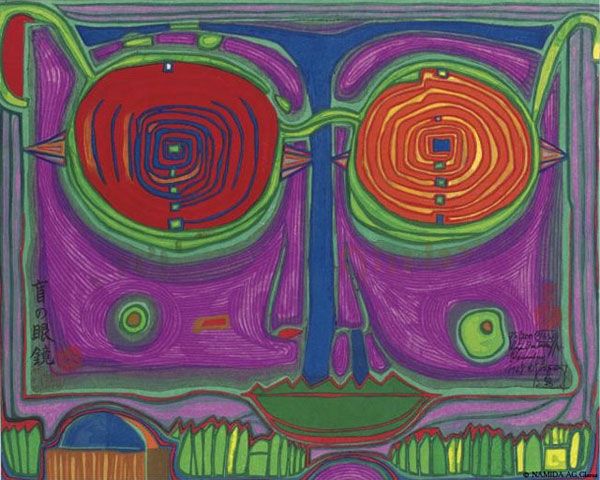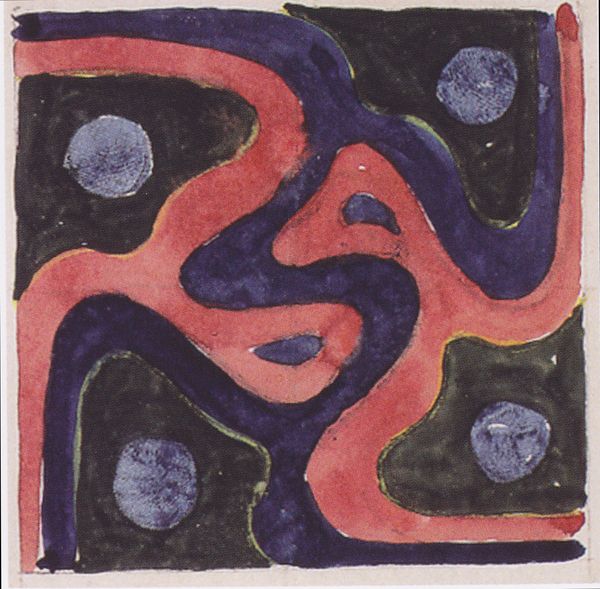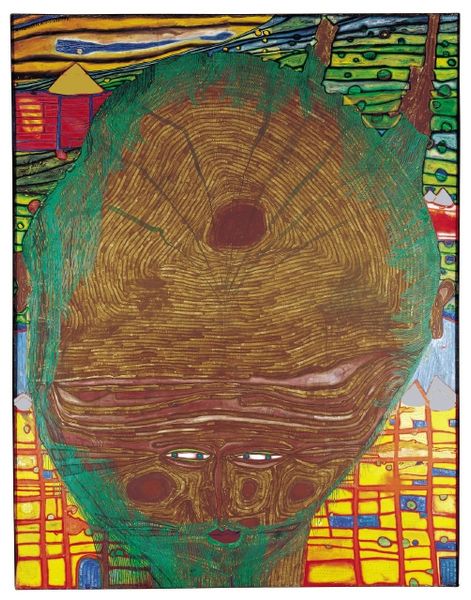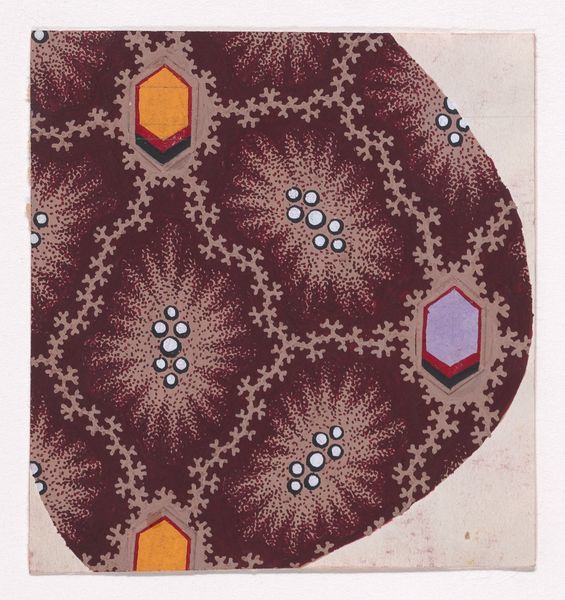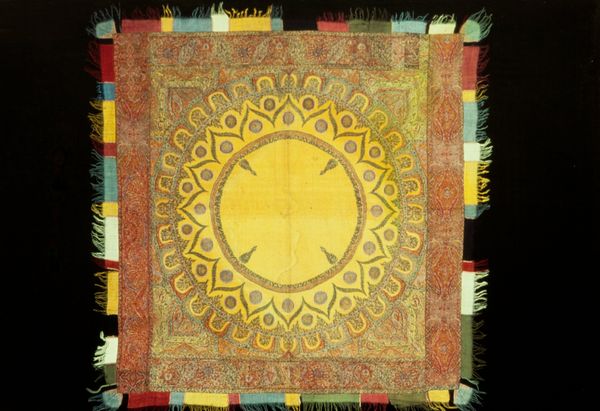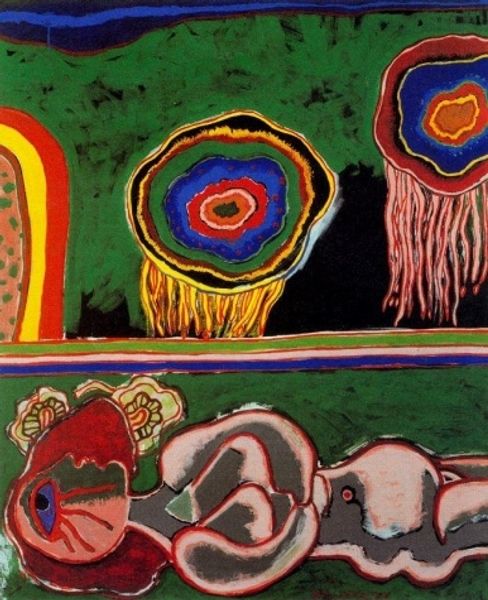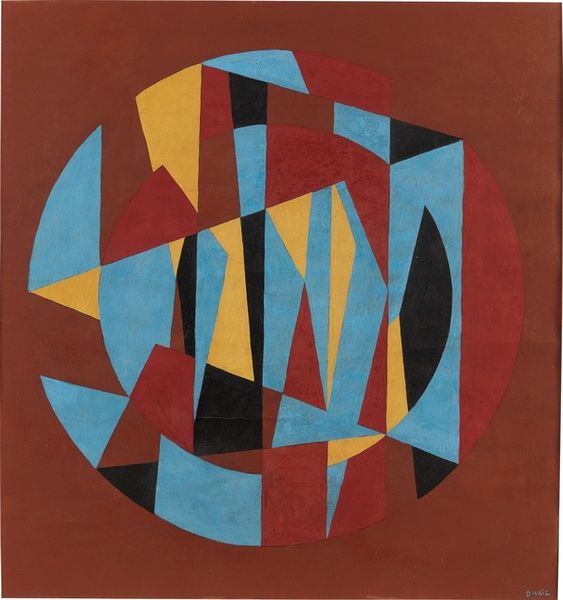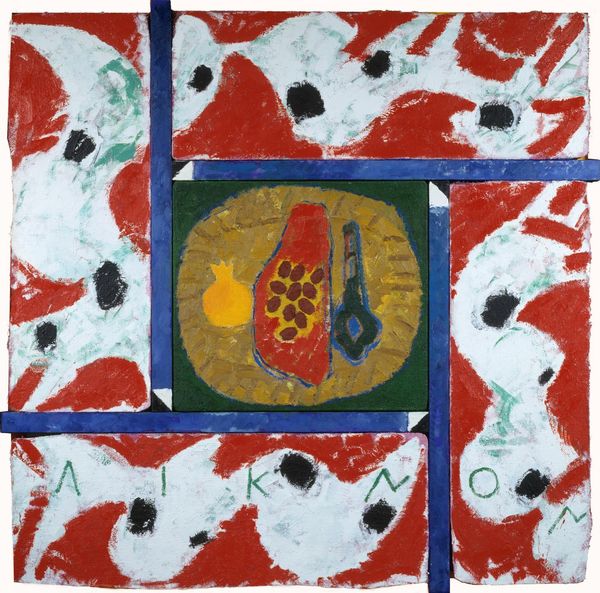
227 A Raindrop Which Falls into the City 1955
0:00
0:00
friedensreichhundertwasser
KunstHausWien, Vienna, Austria
Copyright: NAMIDA AG, Glarus (displayed with the permission of Hundertwasser Non-Profit Foundation) The displayed work of art is protected under the copyright law. In particular, it is not permitted to reproduce, to alter, to print or to publish these works of art. Violations will be prosecuted according to civil and criminal law.
Curator: Here we have Friedensreich Hundertwasser’s mixed-media artwork, “227 A Raindrop Which Falls into the City," created in 1955. Editor: It immediately strikes me as both organic and structured. The central form has this spiraling pull, a vortex of deep colors, but it's all contained within a grid-like framework. Curator: Hundertwasser’s work is deeply intertwined with his ecological activism. Think about the title – it personalizes the raindrop, framing its entry into the city as a significant event, loaded with implications about the natural world intersecting with urban space. The composition speaks to the artificial containment of the natural water cycle within the geometrical shape of the urban environment. Editor: I see it too. The rigid squares seem to hem in the free-flowing form at the center. The work plays on the tension between organic and inorganic shapes to make that clear. Note the texture also, the layering gives the piece dimensionality; it isn’t merely a flat surface. Curator: And that vortex can be interpreted as both generative and destructive. Water is life, but a flood can also devastate a community. The work engages in the conversation around modernization’s effects, where technology and environmental concerns are central. Editor: The central colors work effectively to build an eye-catching focal point for the overall image, where we can analyze the depth and use of color, particularly the tension created through the contrasts of darker and lighter pigments. How each shade subtly suggests depth is what commands my interest, speaking to Hundertwasser's technique. Curator: His approach definitely challenged the status quo. Consider the era in which this work was made—a time of immense social and environmental change. The grid might also be symbolic of social structures attempting to restrict freedom and fluidity, but the raindrop finds its place within it regardless. It makes an assertion about humanity and its effects on natural processes. Editor: It is quite remarkable. Through Hundertwasser’s orchestration of shapes and colors, we are asked to consider water and all its intrinsic properties and social value, while also challenging its place within modernity’s confines. Curator: Ultimately, this work prompts us to reconsider our relationship with the environment and challenges our presumptions about control, and that, I believe, still holds immense resonance today.
Comments
No comments
Be the first to comment and join the conversation on the ultimate creative platform.


